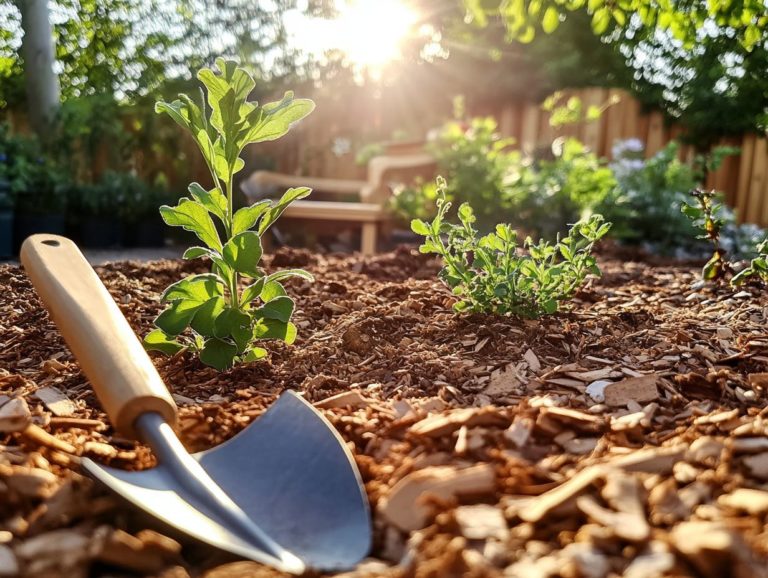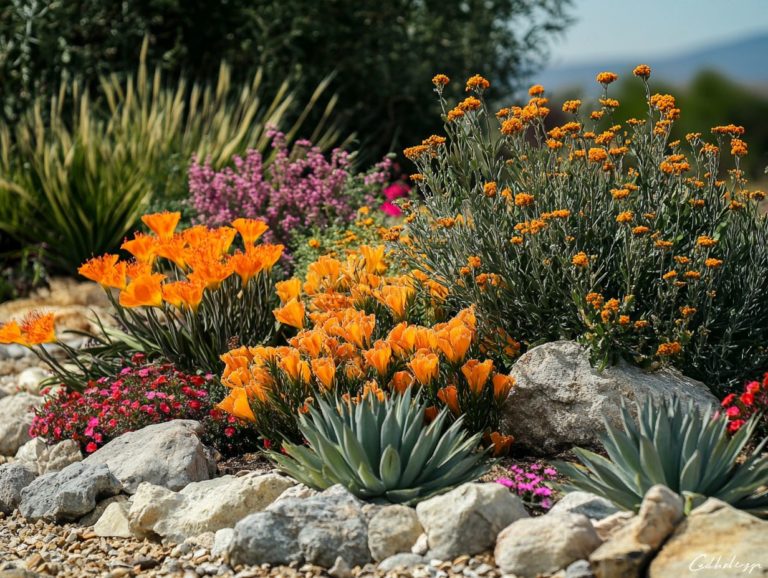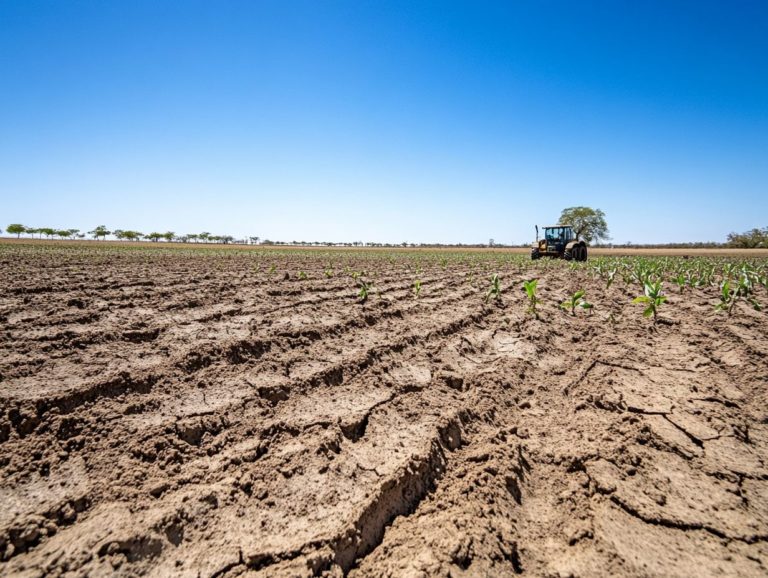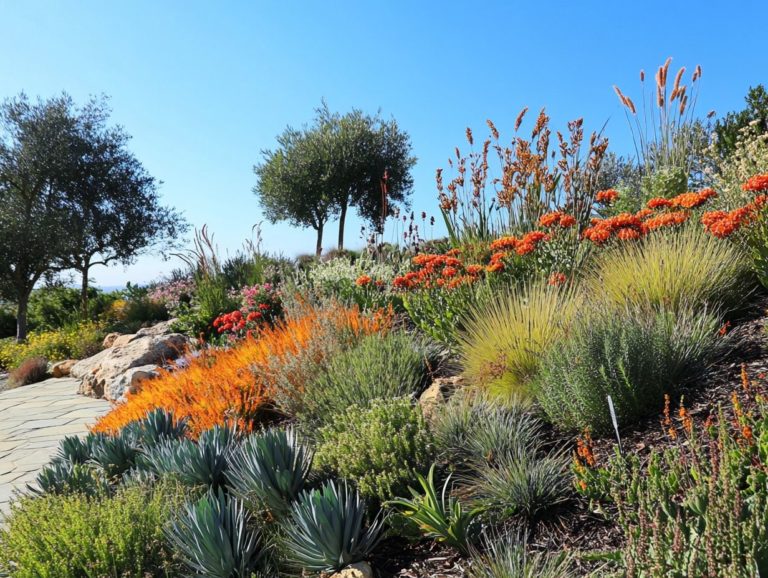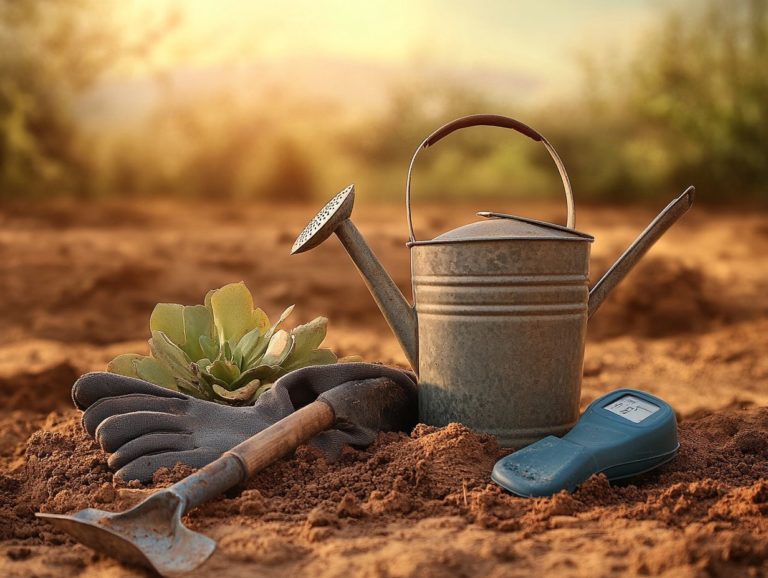How to Maintain Drought-Resistant Landscapes?
Drought-resistant landscapes are becoming a vital aspect of adapting to our changing climate, providing a sustainable answer to water scarcity while simultaneously enhancing the aesthetics of your outdoor spaces. With climate change affecting our water supply, now is the time to embrace drought-resistant landscaping!
Let s explore what drought-resistant landscapes are and why they matter, showcasing their environmental and financial advantages.
From choosing the perfect plants to employing efficient watering techniques, this guide outlines the key elements of creating and maintaining a drought-resistant landscape. Explore how you can cultivate a thriving garden that conserves resources and flourishes throughout the year.
Contents
- Key Takeaways:
- Understanding Drought-Resistant Landscapes
- Benefits of Drought-Resistant Landscapes
- Designing a Drought-Resistant Landscape
- Plant Selection for Drought-Resistant Landscapes
- Watering Techniques for Drought-Resistant Landscapes
- Maintaining a Drought-Resistant Landscape
- Frequently Asked Questions
- What are some tips for maintaining a drought-resistant landscape?
- How often should I water my drought-resistant landscape?
- Do I need to fertilize my drought-resistant landscape?
- Can I still have a beautiful landscape with drought-resistant plants?
- How can I prevent weeds in my drought-resistant landscape?
- Do I need to replace my entire landscape to make it drought-resistant?
Key Takeaways:
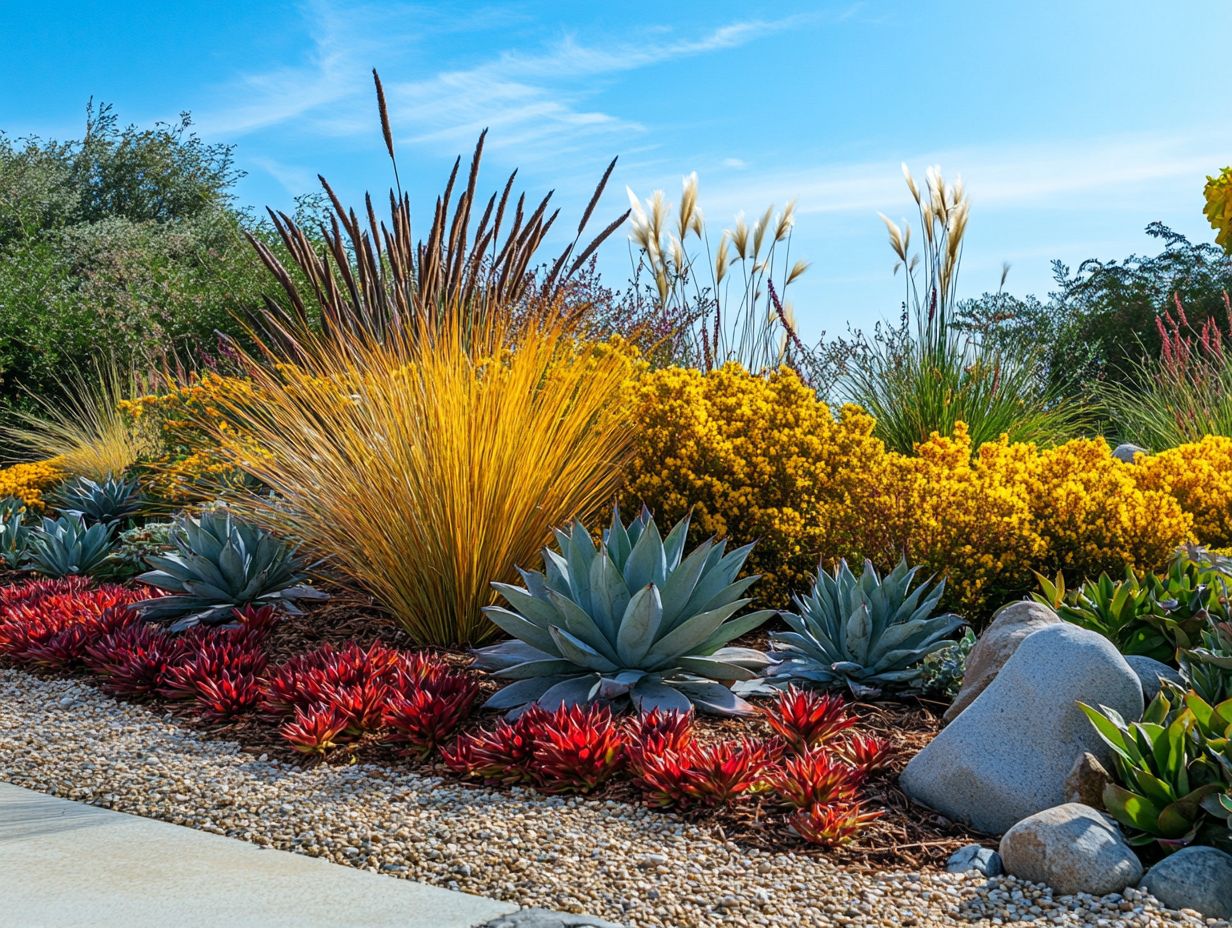
- Choose drought-tolerant plants and efficient watering techniques to save both water and money.
- Proper design and maintenance of drought-resistant landscapes can provide environmental benefits and financial advantages.
- Maintain consistent care and troubleshooting for a thriving and resilient drought-resistant landscape all year round.
Understanding Drought-Resistant Landscapes
Understanding drought-resistant landscapes is essential for you if you’re aiming for sustainable gardening and effective landscape design, particularly in arid regions like California and Texas. Learning about the importance of drought-resistant plants in landscaping can greatly enhance your gardening efforts.
With climate change ramping up the frequency and intensity of droughts, incorporating drought-tolerant plants and innovative water management strategies is no longer optional; it’s necessary. Exploring the future of drought-resistant landscaping not only conserves water but also boosts habitat value by supporting native species and enhancing soil moisture retention.
By embracing practices like xeriscaping designing gardens that use less water you can significantly reduce your ecological footprint while still enjoying a vibrant garden. This holistic approach not only aligns with contemporary environmental goals but also gives you the power to build resilience against water scarcity.
Definition and Purpose
The definition and purpose of drought-resistant landscaping revolve around crafting sustainable, water-efficient gardens that not only thrive in arid conditions but also minimize the need for excessive irrigation. This approach supports water conservation and champions the use of native plants and climate-adapted species that are perfectly suited for your local environment.
Such landscapes typically feature deep-rooted plants that can access moisture stored deeper in the soil, along with mulch and ground cover to keep evaporation at bay. You ll often find designs that incorporate xeriscaping techniques, strategically utilizing stones and gravel to reduce water-needing areas while enhancing aesthetic appeal.
By recognizing the importance of drought-tolerant plants, you can create beautiful, resilient gardens that require less maintenance and are better equipped to handle the challenges brought on by climate change. To ensure your garden thrives through winter, learning how to winterize drought-resistant gardens is essential. Ultimately, embracing drought-resistant landscapes contributes to a healthier ecosystem and fosters a sustainable approach to gardening.
Benefits of Drought-Resistant Landscapes
Drought-resistant landscapes offer a wealth of advantages that blend environmental responsibility with financial savvy, making them an astute choice for homeowners and communities alike, especially in regions prone to drought.
By choosing drought-tolerant and low-maintenance plants, you not only elevate the visual allure of your surroundings but also make a significant contribution to water conservation by drastically lowering water usage and improving habitat value.
You can also save money by adopting these landscaping practices. Reduced irrigation and maintenance expenses translate into long-term savings, all while minimizing the ecological footprint typically associated with conventional landscaping methods.
Environmental and Financial Advantages
The environmental and financial benefits of drought-resistant landscapes are truly compelling. These spaces not only protect valuable resources but also provide significant cost savings over time. By employing water conservation techniques and selecting low-maintenance plants, you can effectively reduce your water bills while making a positive contribution to the environment.
This exciting way to landscape minimizes the need for frequent irrigation, helping to conserve those precious water supplies that often run thin in arid regions. Choosing native and drought-tolerant plants can drastically lower your maintenance costs, freeing you from the routine of lawn mowing, fertilization, and pesticide applications.
Beyond the immediate financial advantages, these landscapes also enhance biodiversity, creating habitats for local wildlife and promoting a healthier ecosystem. With the growing emphasis on sustainable living, integrating drought-resistant designs isn t just a smart economic choice it s a vital step toward ecological responsibility.
Designing a Drought-Resistant Landscape
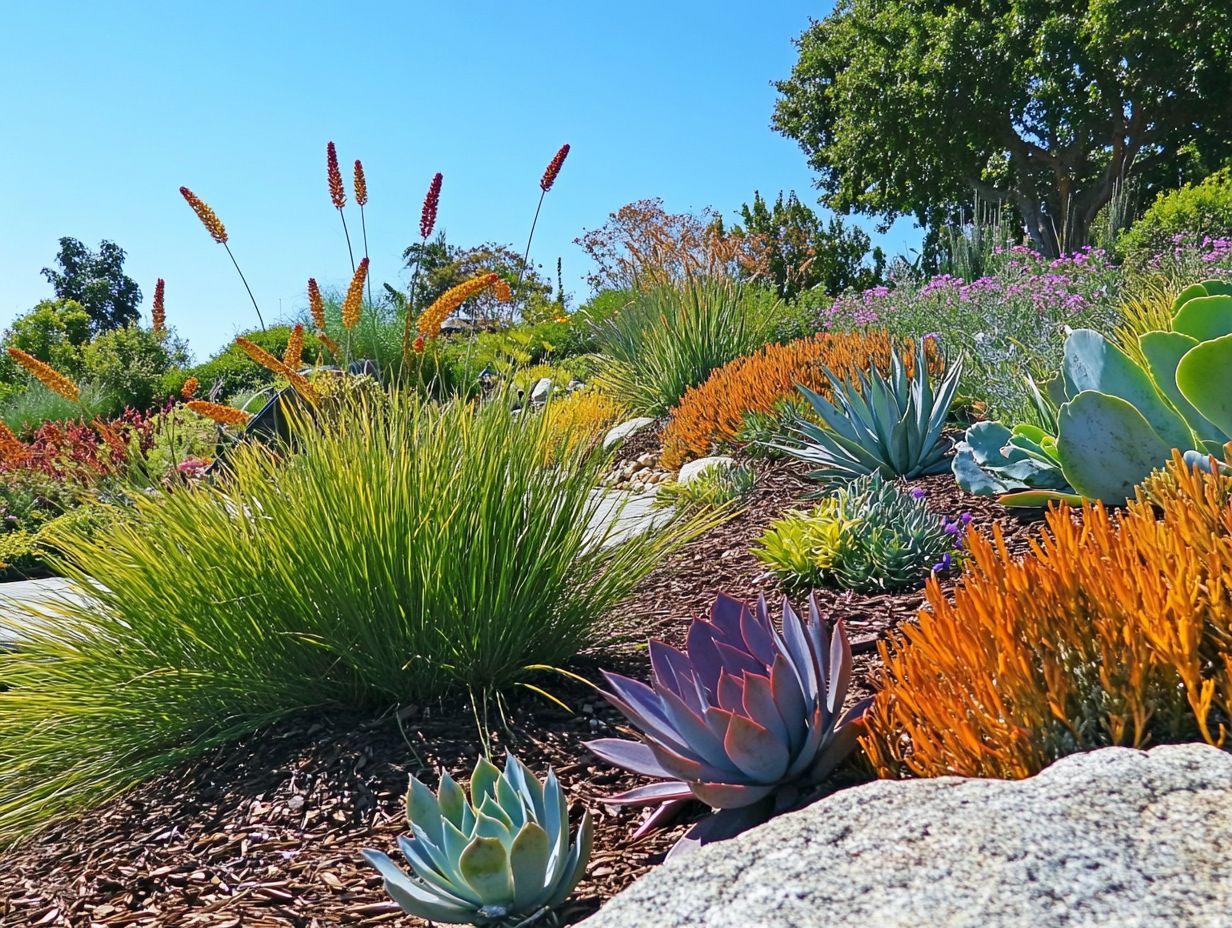
Designing a drought-resistant landscape demands careful planning and thoughtful consideration of several key elements tailored to the unique conditions of your environment.
Embrace landscape design principles that prioritize water conservation, such as incorporating water-saving landscaping methods and selecting native plants. For detailed guidance on this process, check out how to plan a drought-resistant garden layout. This approach significantly bolsters your landscape’s resilience against drought.
Implement effective watering practices, along with installing efficient irrigation systems and permeable surfaces surfaces that allow water to flow through, reducing runoff to enhance soil moisture retention, ensuring your landscape remains vibrant even during dry spells.
This deliberate approach not only achieves your aesthetic goals but also aligns seamlessly with sustainable practices.
Key Elements and Considerations
When you set out to design a drought-resistant landscape, several key elements and considerations deserve your attention, ensuring that you achieve both beauty and sustainability.
- Prioritize native plants that require minimal water while enhancing habitat value.
- Utilize efficient irrigation systems that optimize water usage and maintain soil moisture.
- Group plants with similar water needs to create microclimates that support healthier growth and minimize waste.
- Use mulch to conserve moisture and reduce weed competition.
Proper maintenance practices, such as adjusting irrigation schedules according to seasonal changes and monitoring soil health, are crucial for sustaining this environment. Ultimately, a thoughtfully designed drought-resistant landscape fosters ecological balance while offering you an aesthetically pleasing outdoor space that thrives even under challenging conditions.
Plant Selection for Drought-Resistant Landscapes
Selecting the right plants is essential for creating a successful drought-resistant landscape, allowing drought-tolerant species to flourish with minimal water input. By focusing on native plants such as Agave, Artemisia, and Salvia, you can enhance not just the aesthetic appeal of your landscape but also bolster local ecosystems.
Incorporate succulents and other climate-adapted plants like lavender and Russian Sage to ensure your landscape remains vibrant and healthy, even during dry spells. Understanding maintenance tips for these species will help you adopt more sustainable gardening practices that benefit both your garden and the environment.
Explore your local nursery for native plants today!
Drought-Tolerant Species and Maintenance Tips
Choosing drought-tolerant species is key to creating a resilient landscape that demands minimal upkeep while flourishing in dry conditions. Incorporating plants like succulents and native varieties can significantly reduce irrigation needs and help maintain soil moisture, promoting sustainability and effortless gardening. Understanding the role of drought-resistant plants in landscaping can enhance your gardening approach even further.
These species are tough and often showcase unique adaptations that allow them to thrive with limited water. For example, many have deep root systems that efficiently tap into underground moisture, while others feature waxy leaves to minimize evaporation.
When selecting drought-tolerant plants, consider important factors such as your local climate, soil conditions, and sun exposure. Use mulching to keep soil moist and control weeds, enhancing the health and longevity of these resilient plants.
Follow these tips to cultivate a vibrant and sustainable landscape that not only survives but thrives, even in challenging conditions.
Watering Techniques for Drought-Resistant Landscapes
Effective watering techniques are essential for cultivating a drought-resistant landscape. These practices optimize water usage and foster healthy plant growth with water-saving irrigation systems.
Implement drip irrigation or smart controllers to ensure water reaches the roots efficiently, minimizing evaporation and runoff. This contributes to greater water conservation.
Understanding the specific water requirements for various plants and monitoring soil moisture levels allows you to create tailored watering schedules that bolster plant health and resilience.
Efficient Watering Methods and Tools
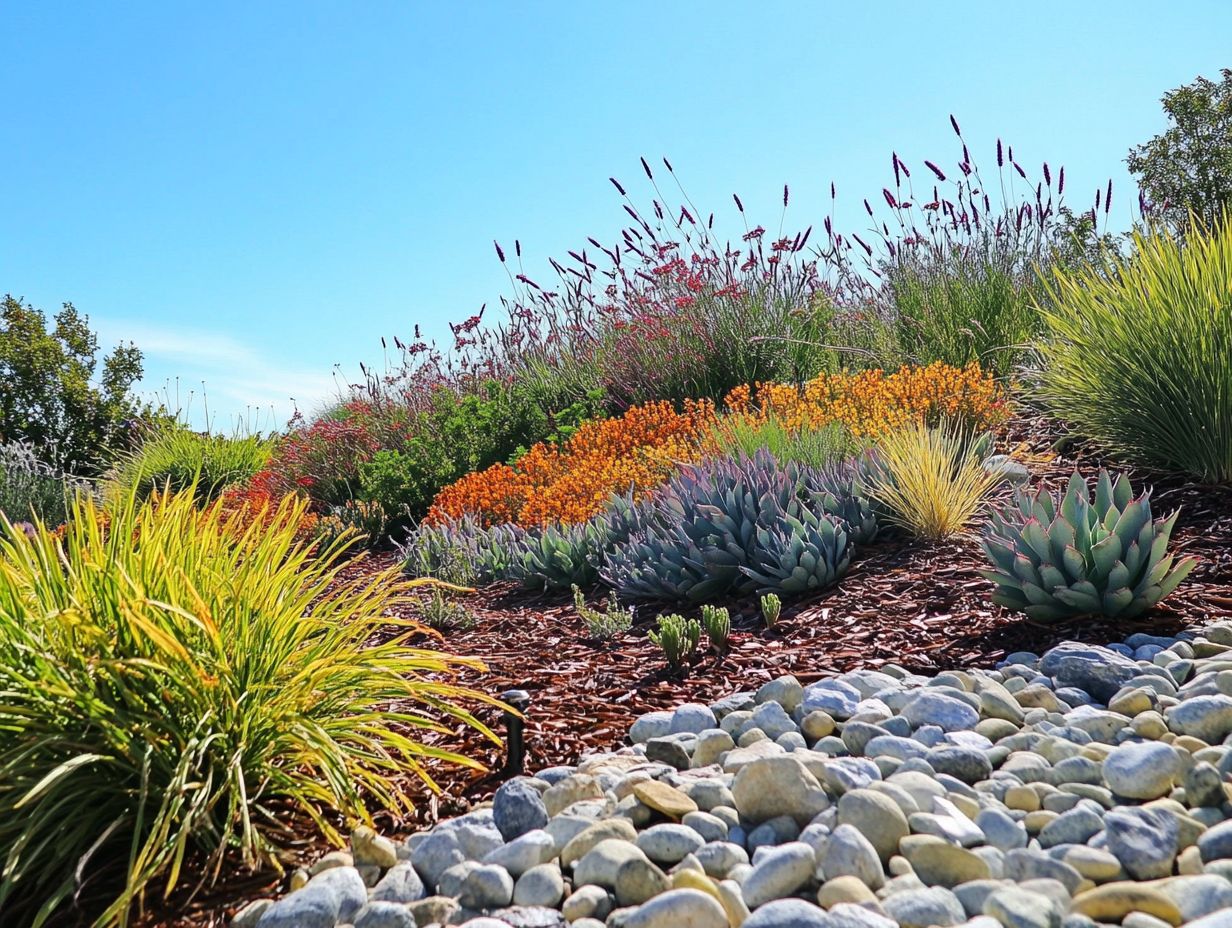
Using efficient watering methods and tools is crucial for maintaining a drought-resistant landscape while maximizing water conservation. Options like drip irrigation and rainwater harvesting systems can significantly reduce your water usage and enhance the effectiveness of your watering practices.
Implement smart irrigation controllers to optimize your watering schedules based on real-time weather data. This ensures your plants receive the right amount of moisture without any waste.
Incorporate mulching techniques to retain soil moisture and suppress weeds. If you prefer a hands-on approach, use soaker hoses to deliver water directly to the soil, minimizing evaporation losses.
Start using these methods and tools today to watch your plants thrive while being a responsible steward of your valuable water resources.
Maintaining a Drought-Resistant Landscape
Embrace year-round care now for a thriving garden! This proactive strategy ensures your plants flourish amid environmental challenges. Adopting low-maintenance gardening practices lightens your workload, promotes sustainability, and enhances soil moisture retention.
Regularly monitor your garden and employ troubleshooting techniques, such as knowing when to amend soil or adjust watering schedules. This knowledge empowers you to keep your landscape healthy and vibrant, even as climatic conditions shift.
By prioritizing these maintenance strategies, you can revel in a flourishing garden, regardless of drought conditions.
Year-Round Care and Troubleshooting Tips
Implementing year-round care and troubleshooting tips is essential for the success of your drought-resistant landscape. This proactive approach helps you address potential issues before they escalate. By adopting a low-maintenance strategy that emphasizes native plants and effective soil moisture management, you can ensure your garden thrives amidst changing weather patterns. For more insights, check out best practices for drought-resistant gardening.
To achieve this, prioritize mulching to retain soil moisture and keep those pesky weeds at bay. Monitor your garden s health regularly to stay in tune with its needs. Incorporating drip irrigation systems a method that delivers water directly to the roots minimizes waste and optimizes hydration.
Understanding the common pests and diseases that can affect drought-tolerant plants will empower you to identify and treat issues promptly, ensuring the integrity of your landscape. Seasonal evaluations and adjustments, informed by fluctuations in temperature and rainfall, will enable you to maintain a resilient and flourishing garden all year long.
Frequently Asked Questions
What are some tips for maintaining a drought-resistant landscape?
Some tips for maintaining a drought-resistant landscape include choosing native and drought-tolerant plants, mulching, watering deeply and infrequently, and regularly monitoring and adjusting irrigation systems. For more detailed strategies, check out these landscape maintenance tips for drought areas.
How often should I water my drought-resistant landscape?
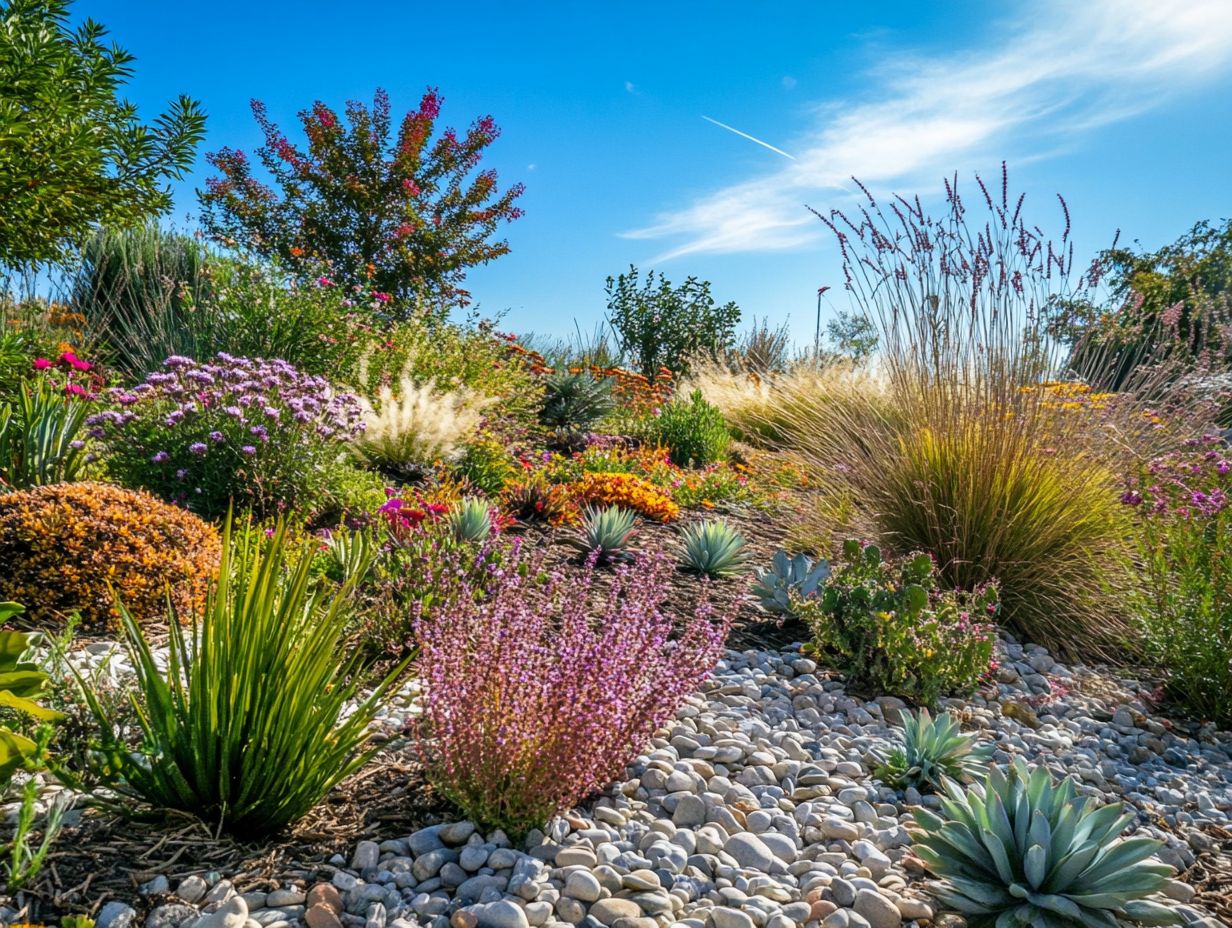
Drought-resistant landscapes should be watered deeply and infrequently, typically once or twice a week depending on weather conditions. This practice encourages deep root growth and helps plants thrive, highlighting the benefits of drought-resistant landscaping and making them more resilient to drought.
Do I need to fertilize my drought-resistant landscape?
Fertilizing a drought-resistant landscape is not necessary, as these plants are adapted to thrive in low-nutrient conditions. However, if you do choose to fertilize, make sure to use a slow-release and low-nitrogen fertilizer.
Can I still have a beautiful landscape with drought-resistant plants?
Absolutely! You ll be amazed by the stunning array of colors, textures, and sizes that drought-resistant plants offer, allowing you to create a beautiful and unique landscape. Plus, they require less maintenance and water, making them a more sustainable choice.
How can I prevent weeds in my drought-resistant landscape?
Mulching is an effective way to prevent weeds in a drought-resistant landscape. Mulch helps retain soil moisture and suppress weed growth. You can also manually remove any weeds that do sprout up.
Do I need to replace my entire landscape to make it drought-resistant?
You can easily transition to a drought-resistant landscape without a complete overhaul! Gradually incorporate drought-resistant plants, starting in areas that are most visible or where plants are struggling. Over time, continue to replace more plants with drought-resistant options.
Get started on your drought-resistant garden today for a sustainable future!

